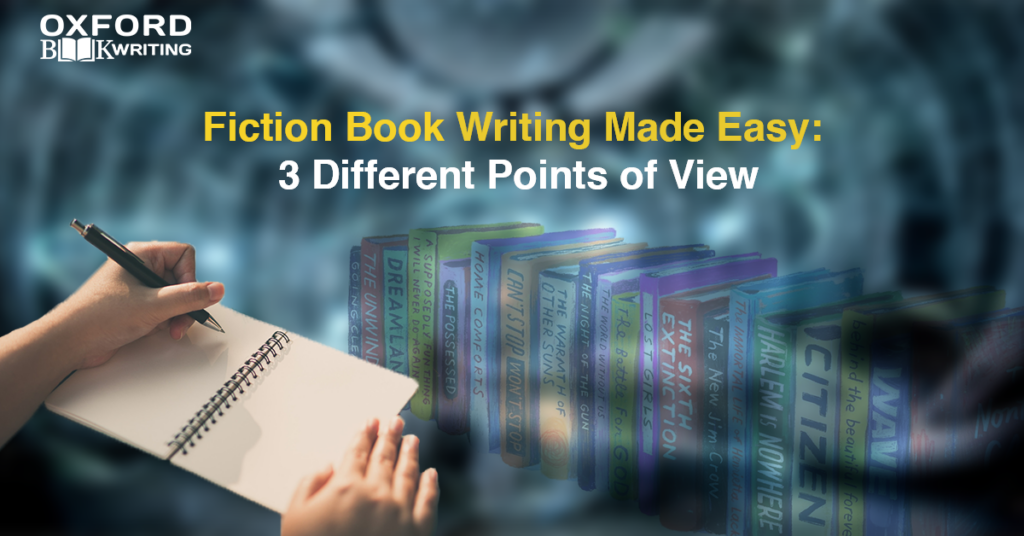Writing a novel requires you to plan a lot of different things. You must build the world, know the characters, and create a cohesive sense of social psychology. You also need to test several narration tools to know which will generate the most engagement and interest in your novel.
One storytelling tool that defines your story’s tone is its point of view. You can tell a story from one of the four points of view. These include first-person, second-person, third-person limited, and third-person omnipresent. Let’s read this post to understand all of them. Don’t forget to read the tools that will help you define which viewpoint works for your story.
Different Points of View
You can tell the story from one of the four angles depending on who is the protagonist or main antagonist of the story. Also, this choice relies on how you want your readers to perceive the story. More specifically, you will want to keep the viewpoint closer to the person whose emotions you want to express most.
Here are the four points of view that work in storytelling:
First-Person Point of View
Here, you use one of your characters to tell the story. The character doesn’t have to be a major one. You can use a minor character, too. However, you must ensure that the character can tell the whole story or it has access to all pieces of the story.
Because most characters see one or another angle of the story, this point of view often appears in combination with other angles. Sometimes, the author chooses to shift between more than one narrator to complete the story. At other times, you will see a shift between first-person, second-person, and third-person points of view for different scenes.
Second-Person Point of View
We can assume from its name that a second-person viewpoint talks to the character. The word ‘you’ appears often in the narrative. Mostly, this style is used when the author wants the reader to empathize with the character. This storytelling technique works best with shorter narratives where the story compels the readers to take part in the story.
While it’s a perfect point of view for marketing stories, it gets quite tricky and difficult to handle in novels and longer stories.
Third-Person Limited
This is the most commonly used point of view in fiction writing. The author focuses on one character and shows the readers what that character is seeing and experiencing. In most novels and stories, this point of view is borrowed from the main characters, but it’s not necessary. Authors have chosen minor characters to tell the story as well.
Third-Person Omnipresent
Unlike the third-person limited point of view, the third-person omnipresent narrative doesn’t base the story on the experiences and sightings of one or more characters of the story. Instead, the spectator is present in all scenes and can see every action.
The biggest difference that sets it apart from third-person limited POV is that it can see even those actions that are done discreetly.
Tips to Use Point of View
Now you know different points of view that you can use in your story. You must be feeling more confused than you were before reading this post till now. Your current concern is,’ Which point of view will work best for your readers?’
Well, you can start by taking the perspective of the main character of the story. Using a third-person perspective is more common and easier, so start from there. Check out the following tips to choose your storytelling perspective.
Think about the Emotions
What emotions do you want to portray? You may want the readers to feel one way or another after reading your story. So, you can portray valiance and courage in an adventure story, you may want to side with the hero or the villain, whoever is braver. If you want the readers to connect more with the character and feel for it, experiment with writing using a first-person perspective.
Experiment
You may deem one perspective more favorable than the other in theory, but you cannot perceive its impact on the reader until you have written down the whole scene. Simply, write down the scenes using the selected perspective. You don’t have to write the whole novel to see if your perspective will work or not. Instead, you will get the idea after writing just a couple of scenes with different points of view.
Shift between Different Perspectives
While most novels rely on one perspective, many have experimented with more than one and have succeeded at it. If you think that sticking to a single character will become too limiting, you can use two or three different characters to give the third-person point of view. At the same time, you can also choose to shift between first- and third-person perspectives when needed.
Establish the Point of View
While you are allowed to switch between perspectives within your novel, you must warn the readers about this change beforehand. So, whenever you shift the perspective from one character to another, you must note the character and announce what he is witnessing or experiencing to set the tone.
Consider the Limitations
Every perspective except the third-person omnipresent one has some limitations. It cannot know every part of the story, especially what’s happening to other characters in the absence of a relevant character, it cannot read thoughts, and it cannot give insights into the motives behind certain actions of other characters. You must consider these limitations while writing the scenes. If you must present the other side of the story, you can switch to another character’s viewpoint.
Wrap Up
One important decision that authors must make before starting their fiction book writing journey relates to choosing a perspective. You can choose one of the four perspectives depending on the needs and style of your novel or story. These styles can be first-person, second-person, third-person limited, and third-person omnipresent.
While you must choose one style to detail a scene, you don’t have to stick to the same style for every scene of the novel. Feel free to switch between points of view to present narratives of different characters.



